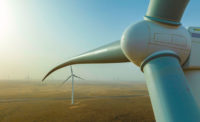According to the recently
released Global Small Wind Turbine Market
2009-2013 report from Research and
Markets, high initial costs and the huge structure of large wind turbines
have given rise to the less costly small wind turbine market. Small wind turbines,
which have a power rating of 100 kilowatt or less, are lightweight, allowing
them to function with light wind. In addition, they can be mounted on rooftops
like television antennae and they produce little noise. The most commonly used
technology for these turbines is the horizontal axis wind turbine, but other
technologies like loopwing turbines are also available. In previous years, small
wind turbines were used to generate power to charge batteries; now, technical
developments have allowed these turbines to be used to power homes and
businesses. What’s more, government support and awareness for renewable energy
will likely help the market for small wind turbines to grow rapidly.
Technological advances have
allowed wind turbine blades to become lighter and smaller, yet more efficient.
Similarly, the rotor speeds have been slowed down to decrease noise, and
vibration isolators have been introduced. Self-protecting technologies that
help the wind turbine to protect itself in case of high wind speeds, along with
active pitch controls to capture energy at these high speeds, have been
introduced. In addition, some small wind turbines feature wireless
connectivity, allowing owners to control the turbine dynamics from a distant
location. New wind turbines can be used on and off the grid, depending on the owner’s
needs. Such technological advances have made these wind turbines more reliable
as an energy source, and thus have driven the market for small wind turbines.
Visitwww.researchandmarkets.com/research/2e6519/global_small_windfor additional
information.
Global Small Wind Turbine Market on the Rise
Looking for a reprint of this article?
From high-res PDFs to custom plaques, order your copy today!




